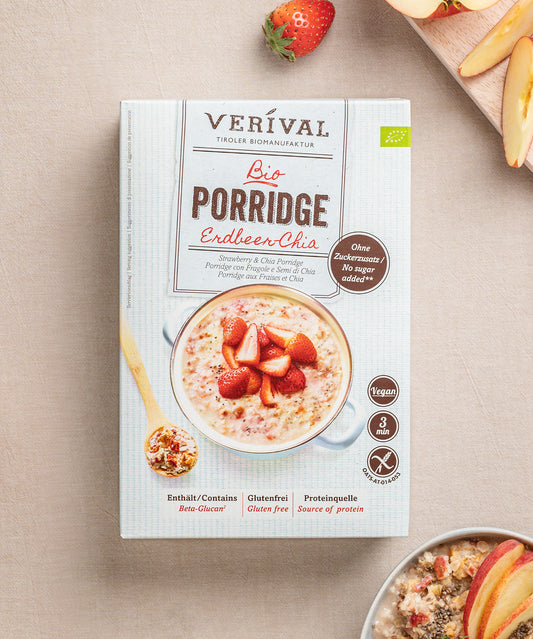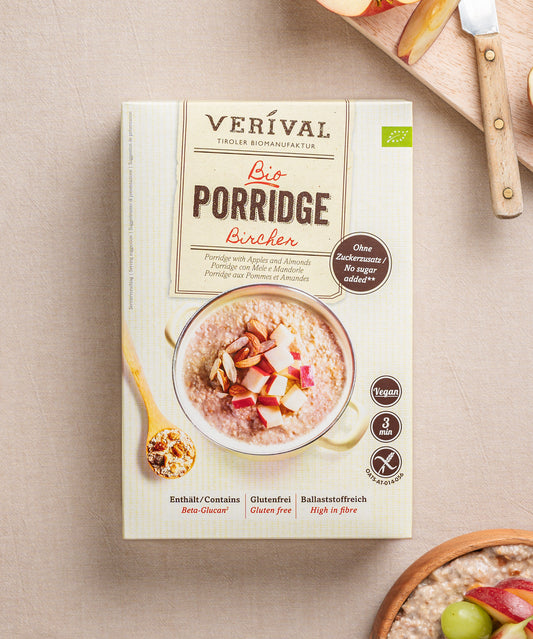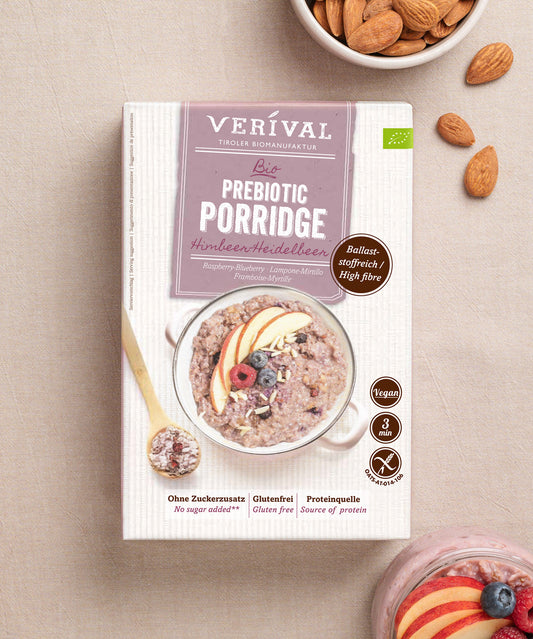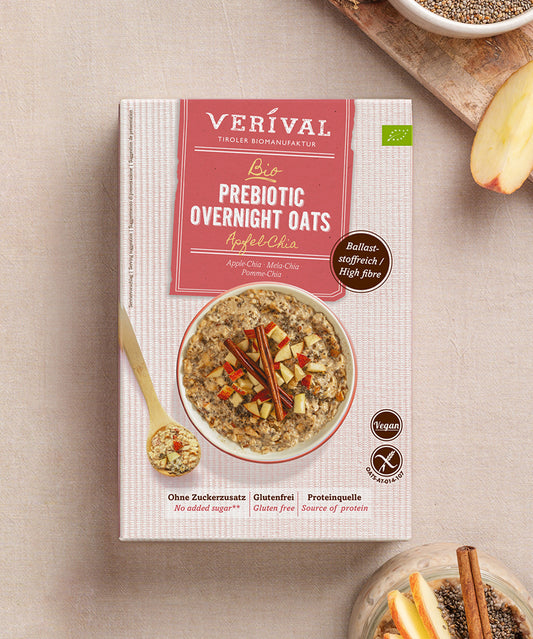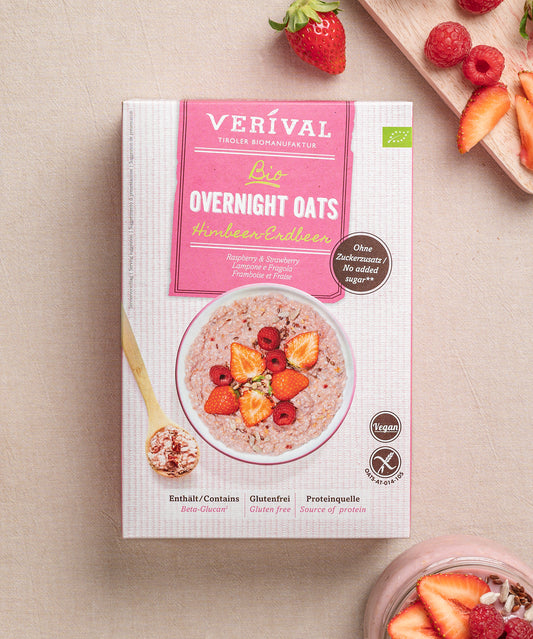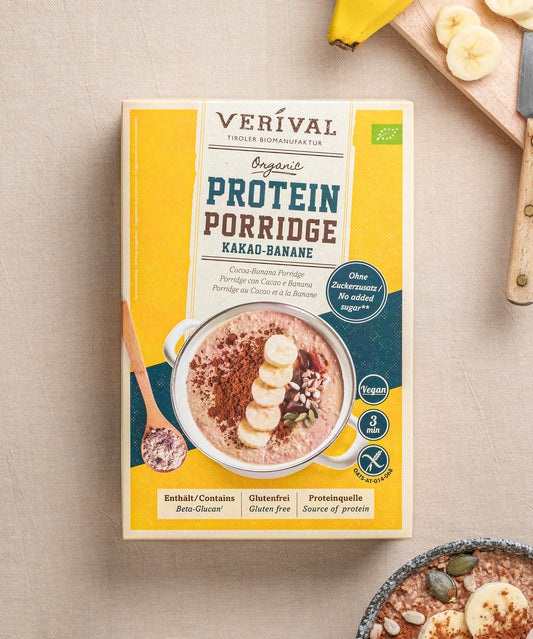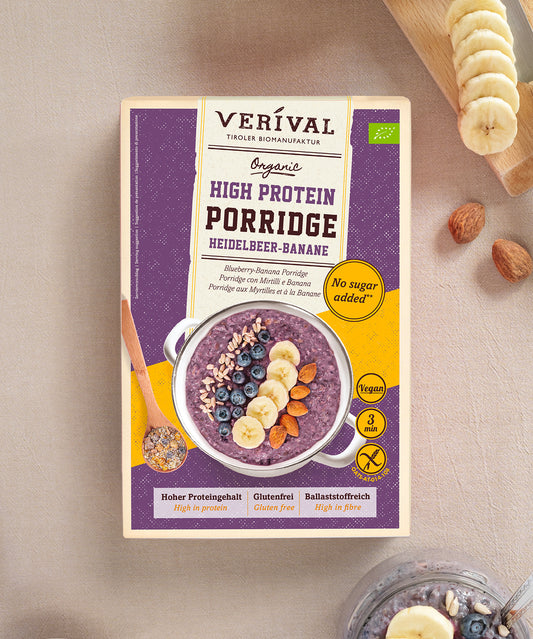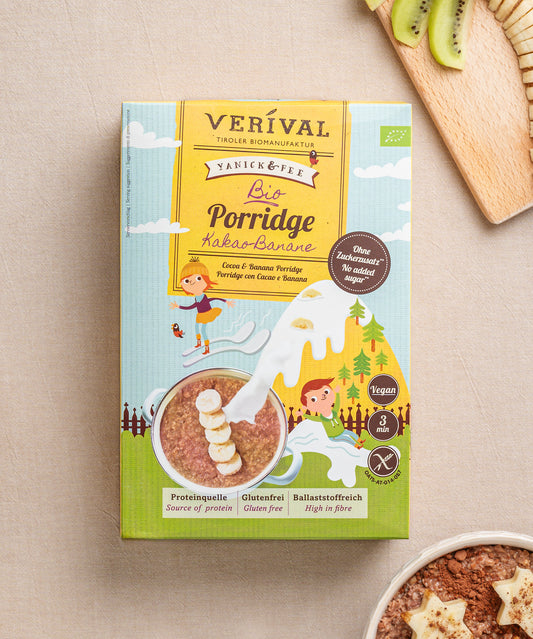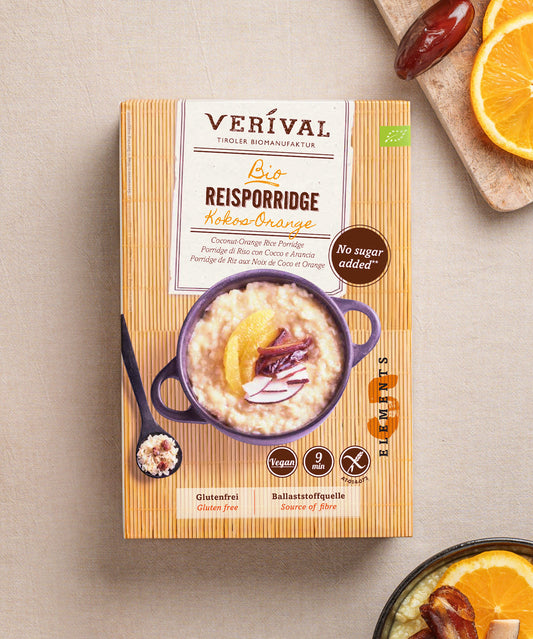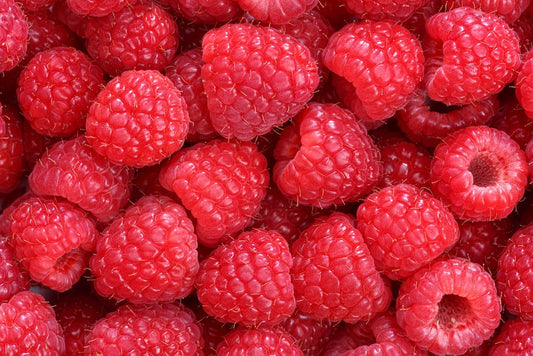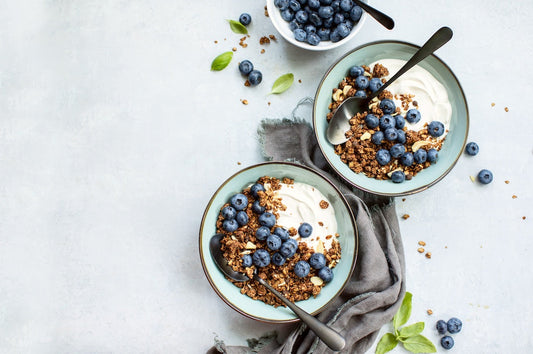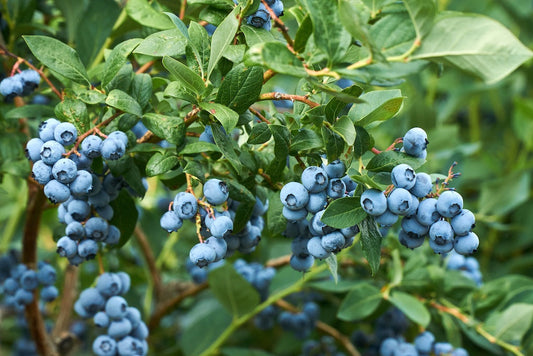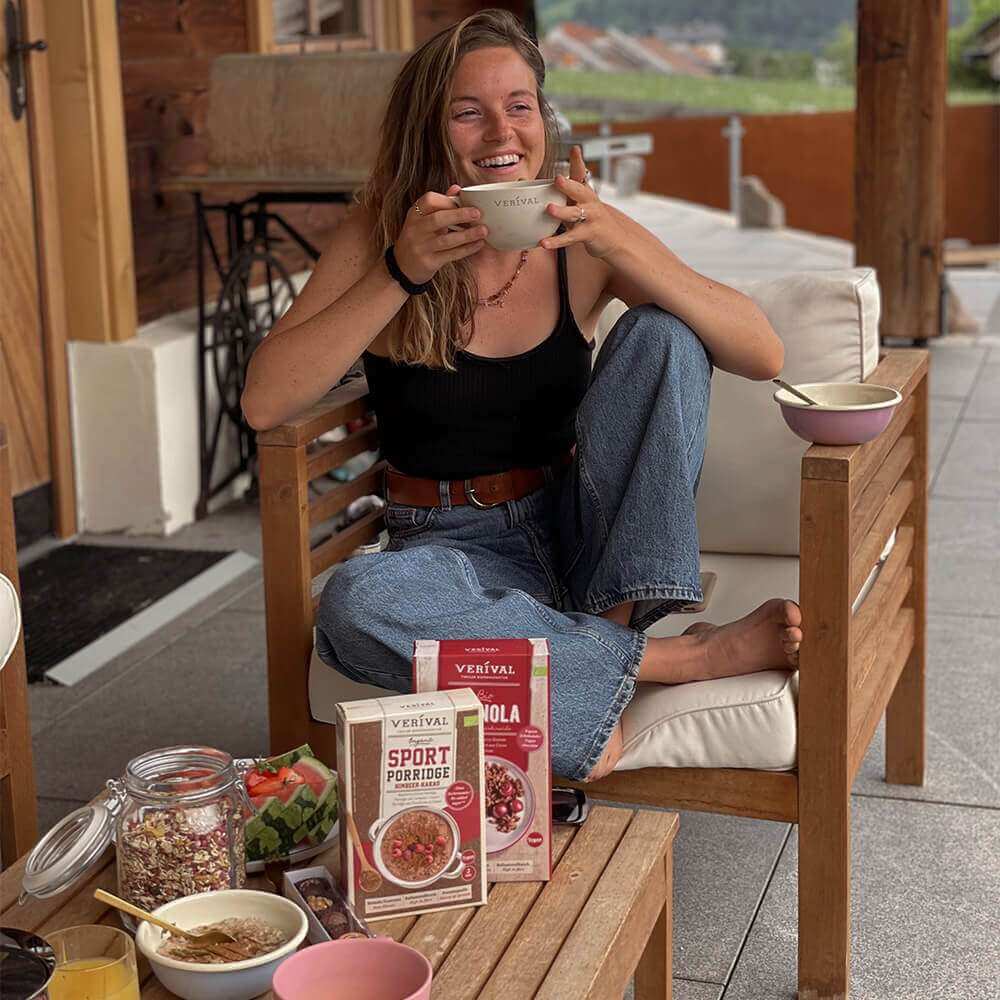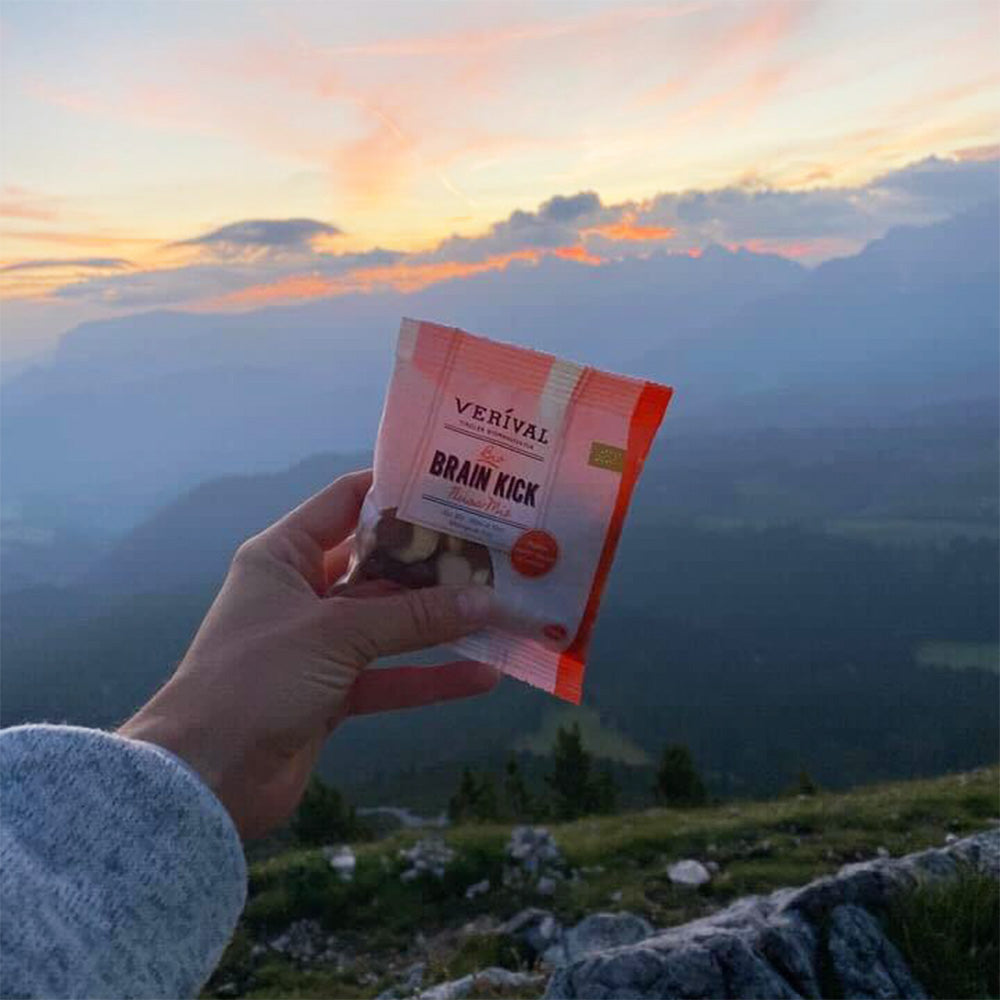Matcha, the powerful green powder, is taking the hearts of many tea lovers by storm. Originally deeply rooted in Japanese culture, matcha has gained enormous popularity worldwide in recent years. That's why in this article, we're getting to the bottom of matcha's history, highlighting its health benefits and how it's used in today's kitchens.
Discover the variety of porridge from Verival here
Matcha: its roots in China and its heyday in Japan
Although the history of matcha has its origins in China, where the first teas were processed into powder, tea found its true home in Japan. It was only in Japan that the process of matcha production was perfected and the tea ceremonies and traditions around the popular drink as we know them today came into being. Over the centuries, matcha has developed from a simple tea drink to a symbol of Japanese culture.
From tencha to fine powder: the production process
The production process of matcha begins with the plant itself. The tea leaves, known as tencha, grow in warm, humid regions of Japan. They are usually grown in shade, with the plants placed under 90% shade for several weeks before harvest. This process boosts the chlorophyll content of the leaves, giving them their vibrant green color and intensifying the flavor of the tea. At the same time, it stimulates the production of amino acids – especially L-theanine, which is responsible for the umami flavor of matcha.
After harvesting, the tencha leaves are separated from the stems and veins of the plant and ground into a fine green tea powder using traditional granite stone mills. This gives matcha its distinctive flavor and intense green color.
Japan's traditional art of matcha preparation
Many people consider the preparation of matcha not just a process, but a true art. In the Japanese tea ceremony, special utensils such as the bamboo whisk (chasen), the matcha bowl and the bamboo spoon (chashaku) are used to whip the tea and create a velvety, lump-free drink. There are two main methods of preparation:
- Usucha: This method involves using a smaller amount of matcha powder, which is then whipped with hot water until a light and airy consistency is achieved. The result is a frothy, slightly bitter tea that is ideal for everyday enjoyment. This method of preparation is by far the most common.
- Koicha: This involves using less water and more tea, giving the tea a thicker consistency. It also tastes sweeter and less bitter. Unlike usucha, koicha is often served on special occasions or in formal tea ceremonies.
Matcha: a health powerhouse
In addition to its cultural significance and long history, matcha also impresses in terms of its health benefits. Thanks to its high content of antioxidants, catechins, L-theanine and vitamin A, it offers protection against free radicals. Compared to other green teas such as sencha, matcha is said to offer excessive health benefits.
One particular ingredient that the superfood matcha contains in high quantities is epigallocatechin gallate (EGCG). EGCG is a powerful antioxidant known for its numerous health benefits. Studies have shown that EGCG can reduce the risk of cardiovascular disease, improve cholesterol levels and boost the metabolism. It is also the subject of research as a potential cancer-prevention agent. However, clear scientific evidence is still lacking.
Matcha in the modern kitchen
Matcha has a long history as a tea beverage. In the modern kitchen, however, the green powder has established itself as a versatile ingredient. Beyond the traditional matcha latte, there are a variety of recipes, from smoothies to cakes, in which matcha plays a role. Our personal favorite is the matcha porridge from Verival, which combines nutrient-rich oatmeal with energizing matcha.
The worldwide influence of matcha: from Japan to Europe
From traditional Japanese tea houses to modern cafés in major European cities, global tea culture would be unthinkable without matcha. Many establishments proudly serve matcha latte or offer sweet delicacies prepared with matcha.
Conclusion
Matcha is a symbol of cultural heritage and culinary delight. With origins in China and perfected in Japan, this tea combines history, tradition and health in a bright green powder. The antioxidants it contains make Matcha a true powerhouse that not only offers health benefits but also has an unmistakable taste.
Its versatility inspires tea lovers, chefs and bakers alike. That's why the green powder can be found not only in traditional matcha lattes in cafes around the world, but also in creative culinary creations and baked goods.
We at Verival also share a fascination for matcha and have created our own matcha porridge.


